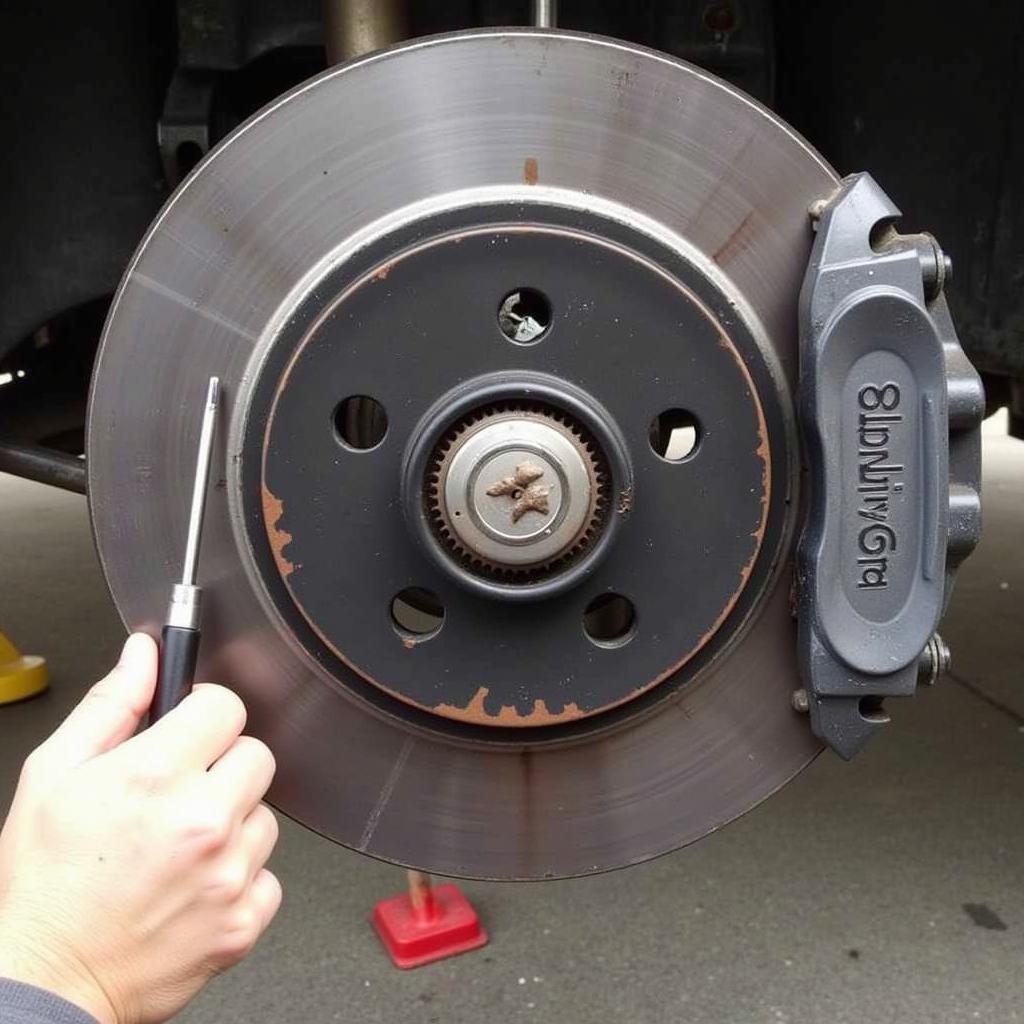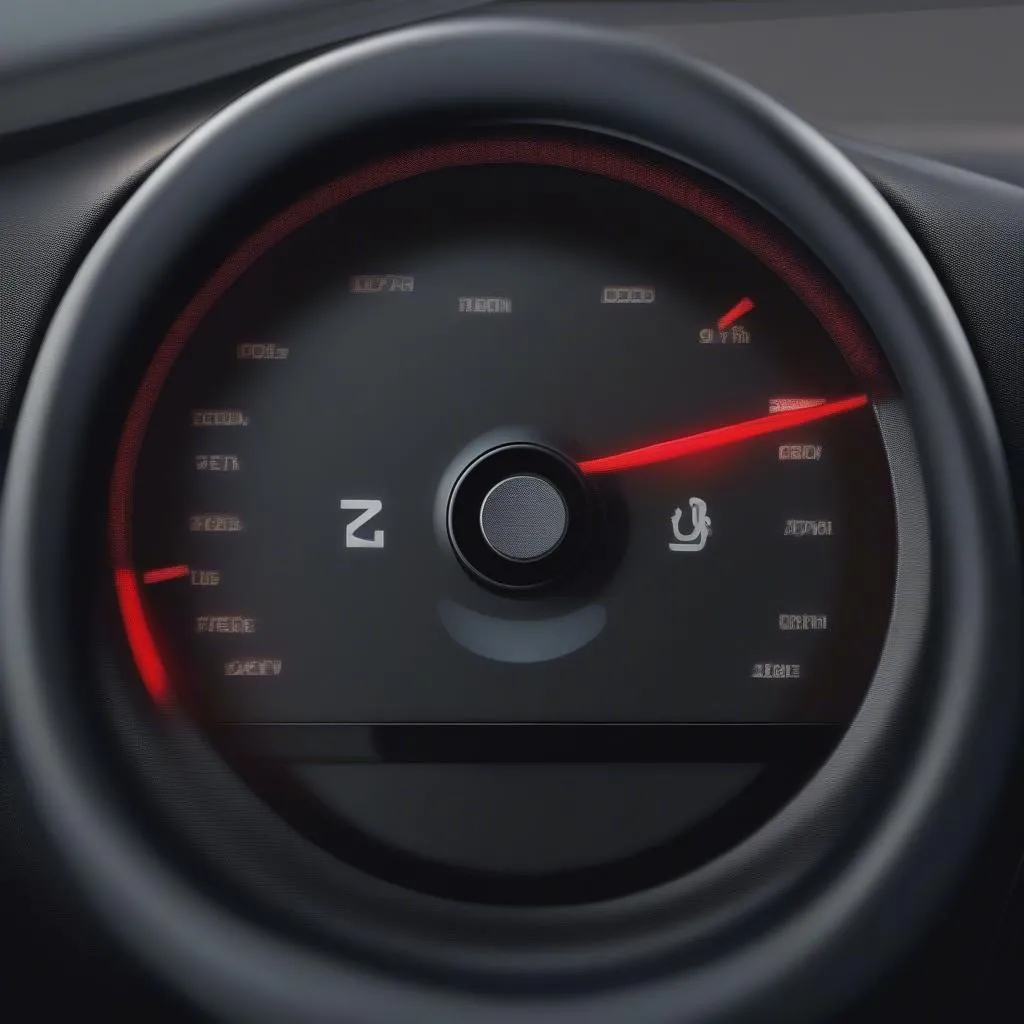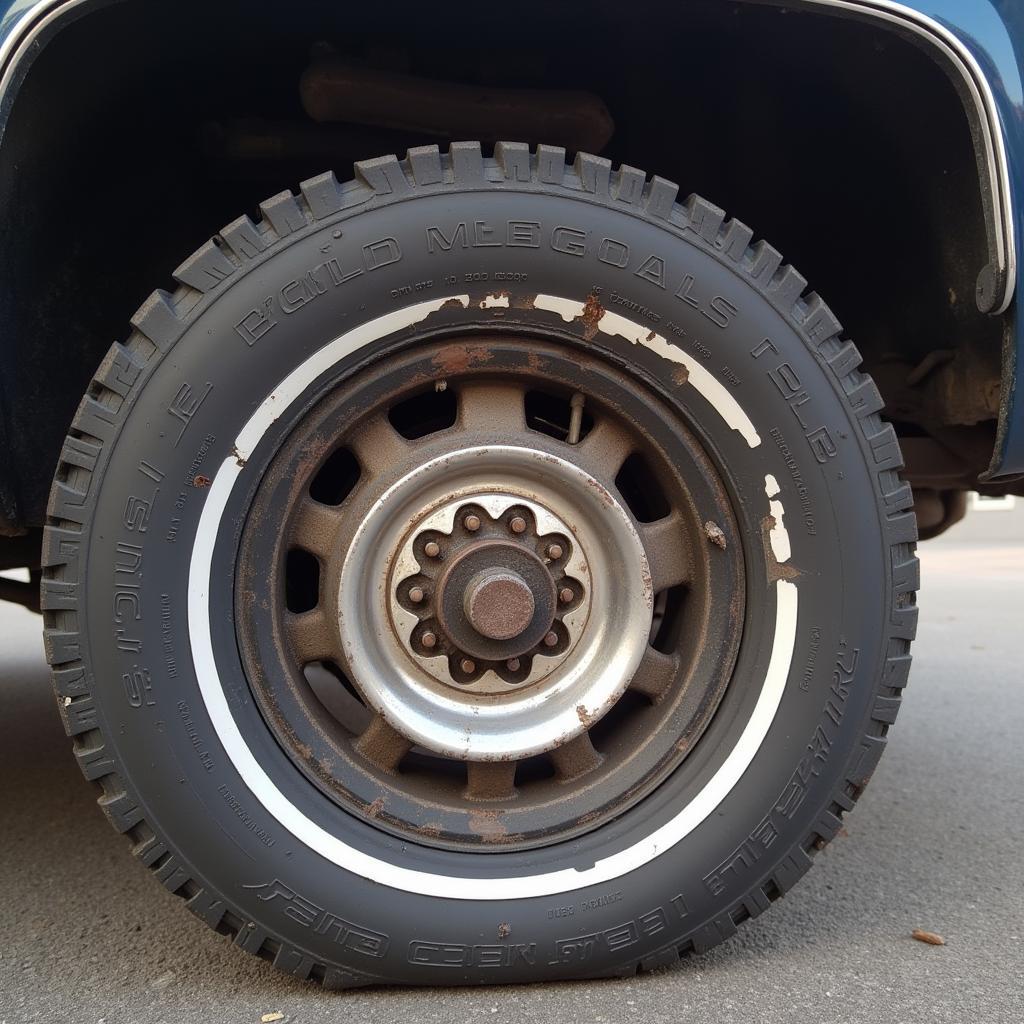That annoying little light on your dashboard – the VW Golf brake pad warning light – can be a real headache. It signals potential issues with your braking system, demanding your immediate attention. Ignoring it could lead to costly repairs or even compromise your safety. This guide will walk you through everything you need to know about the VW Golf brake pad warning light, from its causes and diagnosis to solutions and preventative measures. vw golf brake pad warning light reset
Understanding the VW Golf Brake Pad Warning Light
The brake pad warning light is designed to alert you when your brake pads are nearing the end of their lifespan. This crucial safety feature prevents you from driving with worn-out brake pads, which can severely impact your stopping power.
What Causes the VW Golf Brake Pad Warning Light to Come On?
Most commonly, the warning light illuminates due to worn brake pads. However, there are other potential culprits:
- Worn Brake Pads: The most frequent reason. Brake pads have wear indicators, small metal tabs that contact the rotor when the pads are thin, triggering the warning light.
- Low Brake Fluid: Insufficient brake fluid can also activate the light. This often points to a leak in the brake system.
- Faulty Brake Pad Wear Sensor: Sometimes, the sensor itself can malfunction, triggering the light even with sufficient pad thickness.
- Wiring Issues: Damaged or corroded wiring connected to the sensor can also cause the light to come on intermittently or stay on permanently.
Diagnosing the Problem
Determining the exact cause requires a bit of investigation. Start by checking your brake fluid level. If it’s low, you likely have a leak. If the fluid level is adequate, the next step is to inspect your brake pads. vw golf brake pads warning light
 VW Golf Brake Pad Inspection
VW Golf Brake Pad Inspection
How to Fix the VW Golf Brake Pad Warning Light
The solution depends on the underlying cause:
- Replacing Worn Brake Pads: If your brake pads are worn, replacing them is the obvious solution. This is a relatively straightforward job that can be done by a DIYer or a professional mechanic.
- Addressing Low Brake Fluid: If you have a leak, locating and repairing it is essential. Top off the brake fluid after fixing the leak. Never drive with low brake fluid.
- Replacing a Faulty Sensor: If the sensor is malfunctioning, it needs to be replaced. This is a relatively inexpensive and simple fix.
- Repairing Wiring Issues: If the problem lies in the wiring, the damaged or corroded wires need to be repaired or replaced.
Preventing Future Issues
Regular maintenance is key to preventing future brake problems:
- Regular Brake Inspections: Inspect your brake pads every 10,000-12,000 miles.
- Brake Fluid Checks: Regularly check your brake fluid level and top it off as needed.
- Quality Brake Pads: Invest in high-quality brake pads for longer lifespan and better performance.
“Regular brake maintenance is not just about saving money; it’s about ensuring your safety and the safety of others on the road,” says John Smith, Senior Automotive Technician at Smith Automotive.
brake pad warning light vw golf
VW Golf Brake Pad Warning Light Reset Procedures
After addressing the underlying issue, you might need to reset the warning light. The process varies depending on the model year of your VW Golf. vw golf mk4 brake pad warning light Consult your owner’s manual or seek professional assistance if you’re unsure.
“Ignoring a persistent brake pad warning light is like ignoring a ticking time bomb. Address the issue promptly to avoid potential disasters,” warns Maria Garcia, Certified Mechanic and owner of Garcia Auto Repair.
Conclusion
The VW Golf brake pad warning light is a vital safety feature. Understanding its meaning and knowing how to address the underlying issues can save you from costly repairs and ensure your safety on the road. Addressing the issue promptly and adhering to a regular maintenance schedule will keep your VW Golf’s braking system in optimal condition. Don’t ignore the vw golf brake pad warning light! vw golf mk5 brake pad warning light
FAQ
- What does the VW Golf brake pad warning light look like? It’s typically a circular symbol with a parenthesis on either side and an exclamation mark in the middle. It may also be accompanied by the word “BRAKE”.
- Can I drive with the brake pad warning light on? While you might be able to drive a short distance, it’s highly discouraged. Worn brake pads significantly reduce stopping power, posing a serious safety risk.
- How much does it cost to replace brake pads on a VW Golf? The cost varies depending on the model year and whether you choose OEM or aftermarket parts. Expect to pay between $150 and $300 per axle.
- How often should I check my brake fluid? It’s a good idea to check your brake fluid level at least once a month.
- Can I reset the brake pad warning light myself? Yes, often you can. Consult your owner’s manual for the specific procedure for your VW Golf model.
- What if the light stays on after replacing the brake pads? This could indicate a faulty sensor, wiring issue, or a problem with the reset procedure.
- Is it safe to replace brake pads myself? If you’re mechanically inclined, it’s a manageable DIY project. However, if you’re unsure, it’s best to consult a professional mechanic.



